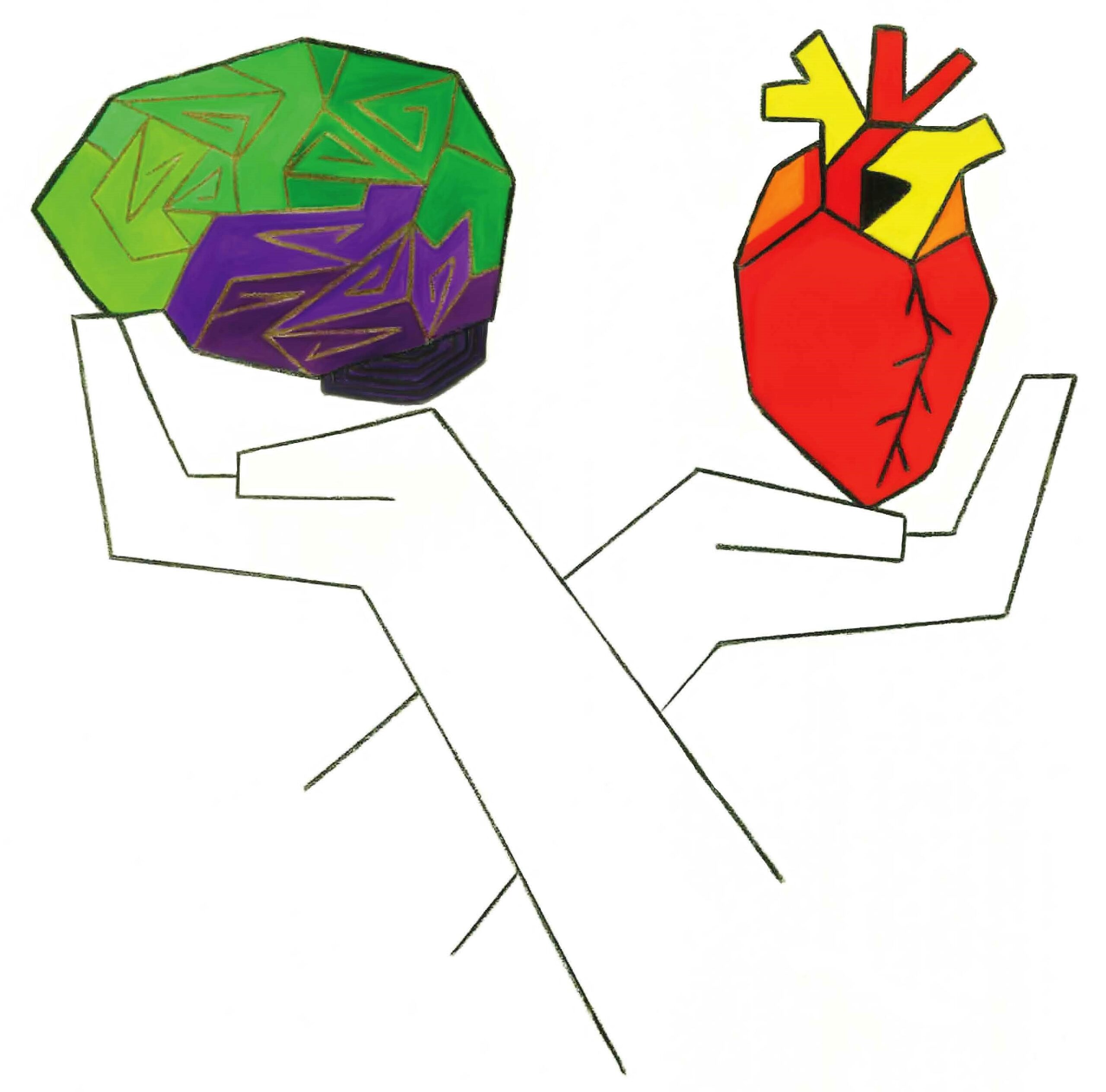Life Paths Research Center Measures
One goal of the Life Paths Research Center is to make it easier to conduct research on psychosocial strengths and all aspects of wellbeing. To that end, we have created or adapted numerous questionnaires.
We adapted measures by shortening them and simplifying wording. We aim for a 6th grade reading level or lower for questionnaires. Many psychological measures are longer than necessary, placing an unnecessary burden on participants and reducing the number of constructs that can be included in a single survey.
© All scales are copyright to the authors of the scale, except for the HRQOL, which is in the public domain. Permission is granted to use our scales for research or other non-commercial uses without fee so long as appropriate citation to the source is given. We also grant permission to use our adapted and simplified wording of other questionnaires but recommend prospective users also contact the original authors.
Suggested citations:
Hamby, S., Grych, J., & Banyard, V. (2013). Life Paths Research measurement packet. Sewanee, TN: Life Paths Research Program.
Hamby, S., Taylor, E., Smith, A., & Blount, Z. (2018). Resilience Portfolio Questionnaire manual: Scales for youth. Sewanee, TN: Life Paths Research Center. doi: 10.13140/RG.2.2.27296.74243
Full Questionnaire Packets
The Scales for Youth is a new packet with adapted scales designed specifically to be used with youth participants.
Resilience Portfolio Model Questionnaires
To assess resilience, it is necessary to assess trauma history, psychosocial strengths that can be used to overcome one’s trauma history, and current functioning. We are strongly opposed to measures that purportedly assess resilience as a personality characteristic. People use their own individual assets, but also the resources of family, friends, and communities to overcome trauma. People can be resilient when coping with some traumas, but struggle when dealing with others, and it is important to consider people’s full portfolio of strengths and their total dose of trauma. You cannot properly assess the process of resilience without measuring all these factors.
The Resilience Portfolio Model groups psychosocial strengths into 3 categories: Regulatory Strengths, Meaning Making Strengths, and Interpersonal Strengths. We recommend including measures from each domain in work on trauma and resilience. When more than one version of a scale is available, we recommend using the most recent version (version 2 or higher).
 Regulatory Strengths
Regulatory Strengths
To date in the regulatory domain, we have found that our measures of emotion regulation (recovering positive affect, the adapted emotion regulation measure) and endurance have shown the most promise.
Anger Management Scale, Brief Trait Version (Hamby, Stith, Grych, & Banyard, 2013; adapted from Stith & Hamby, 2002)
Coping: Appraisal and Behaviors (Hamby, Grych, & Banyard, 2013)
- Coping Scale Urdu Translation #1
- Coping Scale Urdu Translation #2
- Coping Scale Urdu Translation #3
- Coping Scale Spanish Translation
- Coping Scale Romanian Translation
- Coping Scale Indonesia Translation
Endurance (Psychological)
- Endurance version 1 (Hamby, Grych, & Banyard, 2013; Partically adapted from Zimbardo & Boyd, 1999)
- Psychological Endurance (version 2) (Hamby, Taylor, Smith, & Blount, 2018; adapted from Hamby, Banyard, & Grych, 2013)
Emotional Awareness (adapted from Gratz & Roemer, 2004)
Emotional Regulation (adapted from Gratz & Roemer, 2004)
Impulse Control (Hamby, Taylor, Smith, & Blount, 2018)
Honesty (adapted from Ashton & Lee, 2009)
Positive Emotion Regulation (formerly called Recovering Positive Affect) (Hamby, Taylor, Smith, & Blount, 2018)
Self-reliance (Hamby, Taylor, Smith, & Blount, 2018)
 Meaning Making Strengths
Meaning Making Strengths
 Meaning Making Strengths
Meaning Making StrengthsTo date in the meaning making domain, we have found that our measure of sense of purpose has shown the most promise and has been the best overall predictor of resilience (across all domains). Mattering also is promising.
Future Orientation (Hamby, Taylor, Smith, & Blount, 2018)
Mattering (Hamby, Taylor, Smith, & Blount, 2018)
Meaning Making–Family Care (Banyard, Hamby, & Grych, 2013; Hamby, Thomas, Banyard, de St. Aubin, & Grych, 2015)
Meaning Making–Morals (Banyard, Hamby, & Grych, 2013; Hamby, Thomas, Banyard, de St. Aubin, & Grych, 2015)
Meaning Making–Other-oriented (Banyard, Hamby, & Grych, 2013; Hamby, Thomas, Banyard, de St. Aubin, & Grych, 2015)
Meaning Making–Self-oriented (Banyard, Hamby, & Grych, 2013; Hamby, Thomas, Banyard, de St. Aubin, & Grych, 2015)
Optimism (Scheier, Carver, & Bridges, 1994)
Purpose
- Purpose version 1 (Steger, Frazier, Oishi, & Kaler, 2006; partially adapted from Scheier, Carver, & Bridges, 1994)
- Sense of purpose (version 2) (Hamby, Taylor, Smith, & Blount, 2018)
Relational Motivation (Hamby, Taylor, Smith, & Blount, 2018)
Religious Meaning Making
- Religious Meaning Making (partially adapted from Amato, 1990; Levin, Markides, & Ray, 1996; Pargament, Smith, Koenig & Perez, 1998; Putney & Middleton, 1961)
- Religious Meaning Making version 2 (Hamby, Taylor, Smith, & Blount, 2018)
 Interpersonal Strengths
Interpersonal Strengths
To date in the interpersonal domain, we have found that our new measures of social support have shown the most promise, with some positive results also for community support and generativity.
Attachment–Maternal (adapted from Furman & Buhrmester, 2009)
Attachment–Paternal (adapted from Furman & Buhrmester, 2009)
Attachment–Romantic (adapted from Fraley, Waller, & Brennan, 2000)
Compassion (Hamby, Grych, & Banyard, 2013; partially adapted from McCullough et al., 2002; Pommier, 2010; Sprecher & Fehr, 2005)
Community Support (Roberts, Hamby, Grych, & Banyard, 2015; adapted from Sampson, Raudenbush, & Earls, 1997; U.S. Air Force, 2011)
Forgiveness (adapted from Gordon & Baucom, 2003)
Generative Roles (Hamby, Thomas, Banyard, de St. Aubin, & Grych, 2015; Banyard, Hamby, & Grych, 2013)
Generativity (adapted from McAdams & de St. Aubin, 1992)
Generous Behaviors (Banyard, Hamby, & Grych, 2013; Hamby, Thomas, Banyard, de St. Aubin, & Grych, 2015; partially adapted from Amato, 1990)
Group Connectedness (Hamby, Taylor, Smith, & Blount, 2018)
School Climate (Hamby, Taylor, Smith, & Blount, 2018)
Social Support
We switched gears with our approach to assessing social support and no longer measure it in terms of just amount (more or less), as in the first two measures below. We recommend assessing social support by asking about specific supportive behaviors (receiving and/or seeking), as in our latest versions.
- Social Support – Friends and Adults (adapted from Turner, Finkelhor, & Ormrod, 2010; Zimet et al., 1988)
- Social Support – Immediate Family (adapted from Turner, Finkelhor, & Ormrod, 2010; Zimet et al., 1988)
- Social Support Received (Hamby, Taylor, Smith, & Blount, 2018)
- Social Support Seeking (Hamby, Taylor, Smith, & Blount, 2018)
Teacher Engagement (Hamby, Taylor, Smith, & Blount, 2018)
Workplace Integration (Roberts, Hamby, Grych, & Banyard, 2015; adapted from U.S. Air Force, 2011)
 Victimization and Other Adversities
Victimization and Other Adversities
 Victimization and Other Adversities
Victimization and Other AdversitiesAdverse Life Experiences (other than victimization)
Both versions of this are recommended, depending on the needs of your project.
- Adverse Life Experiences (Hamby, Taylor, Smith, & Blount, 2018; partially adapted from Turner, Shattuck, Hamby, & Finkelhor, 2013)
- Adverse Lifetime Events Index (Turner et al., 2013)
Digital Victimization & Online Privacy Survey (Hamby, Taylor, Smith, Jones, & Mitchell, 2017)
Financial Strain Index (Hamby, Turner, & Finkelhor, 2011)
Polyvictimization
Both versions of this are recommended, depending on how many items you are able to include (the longer Key Domains version will provide a more comprehensive history of victimization and a wider range for your measure).
- Juvenile Victimization Questionnaire–Key Domains version (adapted from Finkelhor, Hamby, Turner, & Ormrod, 2005; Hamby, Finkelhor, Turner, & Kracke, 2011) – Includes Caregiver Maltreatment, Exposure to Domestic Violence, and Peer/Community Victimization Subscales
- Juvenile Victimization Questionnaire – Short Form (adapted from Hamby, Finkelhor, Ormrod, & Turner, 2005)
- Please see also the Juvenile Victimization Questionnaire website for more information on that measure: http://www.unh.edu/ccrc/jvq/index.html
Partner Victimization Scale (Hamby, 2016)

 Resilience and Well-Being
Resilience and Well-Being

Wellbeing is a multidimensional construct. Although a lot of resilience research has focused on trauma symptoms, it is also important to assess psychological (aka subjective) wellbeing, physical wellbeing (also called health-related quality of life), and spiritual wellbeing.
Alcohol Misuse (adapted from Babor, de la Fuente, Saunders, & Grant, 1992)
Delinquency (adapted from Cuevas, Finkelhor, Turner, & Ormrod, 2007; Loeber & Dishion, 1983)
Family Wellbeing (Hamby, Taylor, Smith, & Blount, 2018)
Physical Wellbeing
- Physical Wellbeing/HRQOL version 1 (adapted from Centers for Disease Control and Prevention, 2000)
- Physical Wellbeing/HRQOL version 2 (adapted from Centers for Disease Control and Prevention, 2000)
Posttraumatic Growth (adapted from Tedeschi & Calhoun, 1996)
Psychological (Subjective) Wellbeing
- Subjective Wellbeing (partially adapted from Battista & Almond, 1973; Diener, Emmons, Larson, & Griffin, 1985; Pavot & Diener, 1993; Pearlin & Schooler, 1978; Rosenberg, 1965; Turner et al., 2012)
- Subjective Wellbeing (Hamby, Grych, Banyard, Smith, & Taylor, 2017)
Spiritual Wellbeing
- Spiritual Wellbeing version 1 (Hamby, Grych, & Banyard, 2013)
- Spiritual Wellbeing: Theistic (Hamby, Taylor, Smith, & Blount, 2018)
- Spiritual Wellbeing: Non-theistic (Hamby, Taylor, Smith, & Blount, 2018)
Trauma Symptoms (Hamby, Taylor, Smith, & Blount, 2018)
 Other Measures & Information
Other Measures & Information
 Other Measures & Information
Other Measures & Information Delinquency (adapted from Cuevas, Finkelhor, Turner, & Ormrod, 2007; Loeber & Dishion, 1983)
Demographics (Hamby, Grych, & Banyard, 2013)
Merged Dataset Variables for American Indian Sample
Narrative Engagement Index (Roberts, Hamby, Grych, & Banyard, 2015)
Narrative Engagement Index – Short Form (Roberts, Hamby, Grych, & Banyard, 2015)
Laws of Life Essay Program (Hamby, Banyard, & Grych, 2013; Some adapted from Pennebaker, Colder, & Sharp, 1990)
Descriptive characteristics such as topic, year in school, amount of time spent on narrative can be adapted for other narrative programs.
